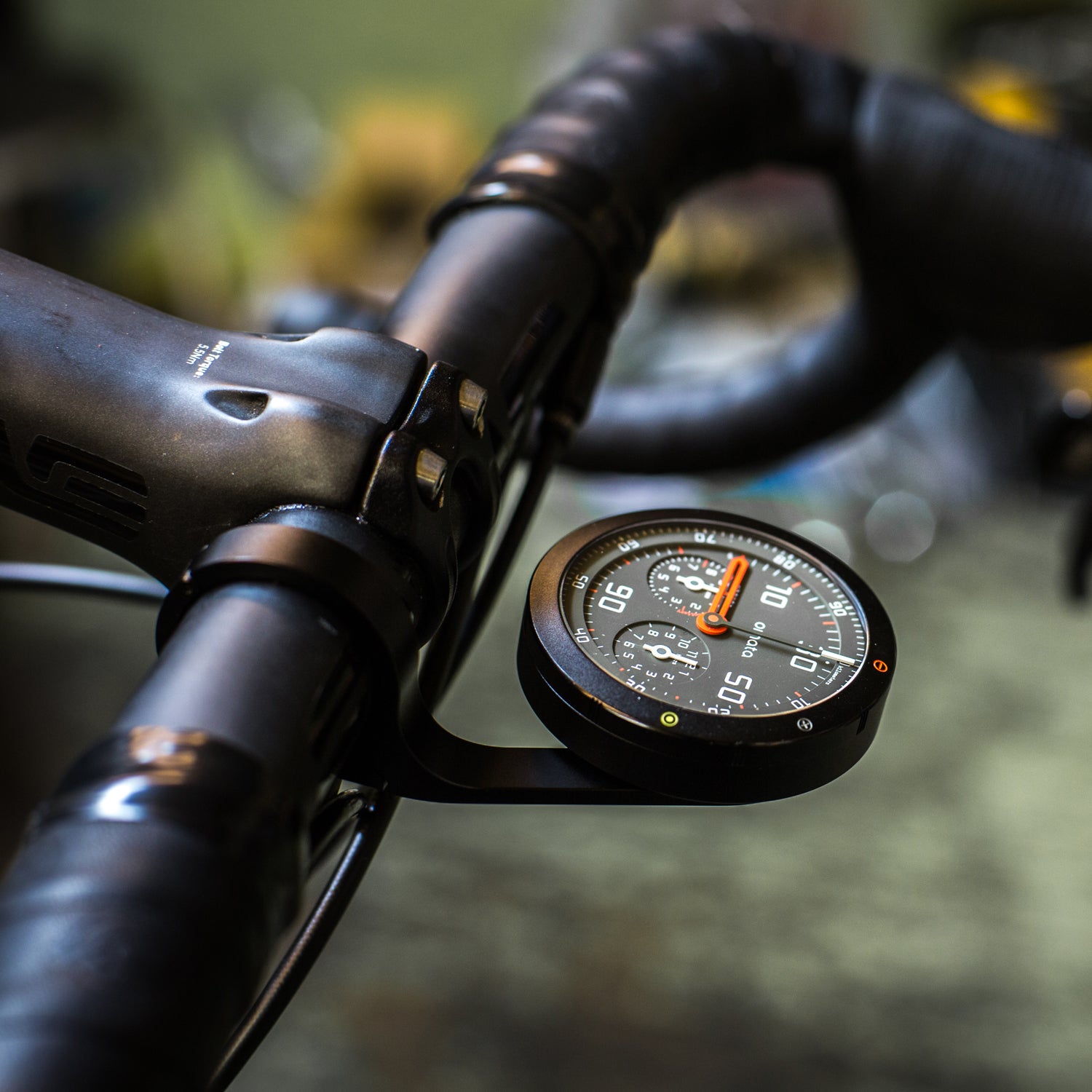Spin a few miles with any crew of roadies and youÔÇÖll no doubt hear plenty of talk about data. Cycling computers are capable of measuring everything from power output and heart rate to calories burned and cadence, and theyÔÇÖre cheaper and more ubiquitous than ever. ┬á
But even as our rides get more wired, a Los AngelesÔÇôbased company wants to go analog. Last week, released the worldÔÇÖs first GPS-enabled bike computer that displays speed, distance, vert, and time on a classic analog face.┬á
ÔÇťOur belief in modern analog comes from a very strong position that technology can be great, but current design sensibilities make it such that it demands more of our attention than is often appropriate, or even necessary,ÔÇŁ says Rhys Newman, co-founder and CEO of Omata. ÔÇťOftentimes, technology distracts from the experiences right in front of us.ÔÇŁ
Newman and Julian Bleecker, fellow┬áco-founder and company┬áCTO, are┬áboth passionate roadies who┬áset out to design an instrument that would rival its competitors in terms of precisionÔÇöwhile being much prettier.┬á
The Omata One is┬ábuilt around a GPS sensor that tracks and records all the metrics. ÔÇťOur R&D team are all ex-Nokia engineers with world-class expertise in precisely the technologies we are using,ÔÇŁ says Bleecker.┬á
Once the GPS data is captured, itÔÇÖs converted to an analog readout. Here, the Omata design team went custom. Bleecker collaborated with the renowned machinists at JapanÔÇÖs Seiko Precision, known for its watches,┬áto create a unique mechanism for job.┬á
The Seiko mechanism translates the data into a series of analog dial readouts. ÔÇťWe have done everything we can to base design decisions on performance, legibility, robustness, and quality,ÔÇŁ says Newman. ÔÇťThere are no purely aesthetic choices made simply for the sake of aesthetics.ÔÇŁ┬á
Every design detail,┬áfrom dial proportions┬áto fonts,┬áwas chosen with ÔÇťglanceabilityÔÇŁ in mindÔÇöthe idea that when youÔÇÖre maxing out on a descent, a quick look at your instrument tells you everything you need to know as quickly as possible.
ÔÇťWe are very aware that┬áfor some people, things like power, cadence, and heart rate are important. They are for us when weÔÇÖre┬átraining for a race,ÔÇŁ explains Newman. ÔÇťThatÔÇÖs why weÔÇÖve engineered ANT+ and BTLE into our product, so that in the future we could create a training edition.ÔÇŁ ItÔÇÖs also part of why Omata┬ábrought in highly decorated Swiss rider Fabian Cancellara┬áas an ambassador and product adviser.┬á
After the ride, users can port data into apps like Strava via the deviceÔÇÖs USB-C┬áport. An in-house app is in development for even easier syncing with third-party platforms, but┬áfor now, Omata is focused on its hardware.
Omata One is currently , where the early backer price is set at $499; MSRP is estimated at $599.


